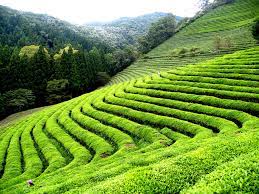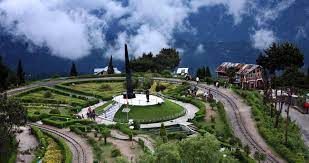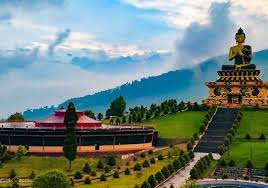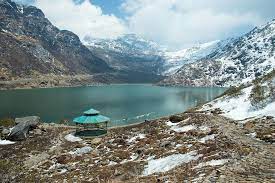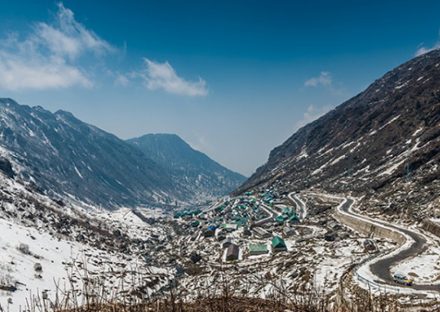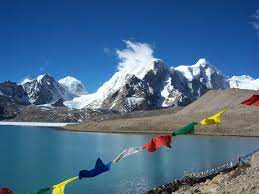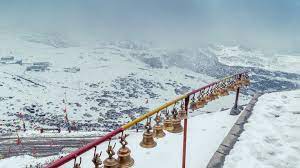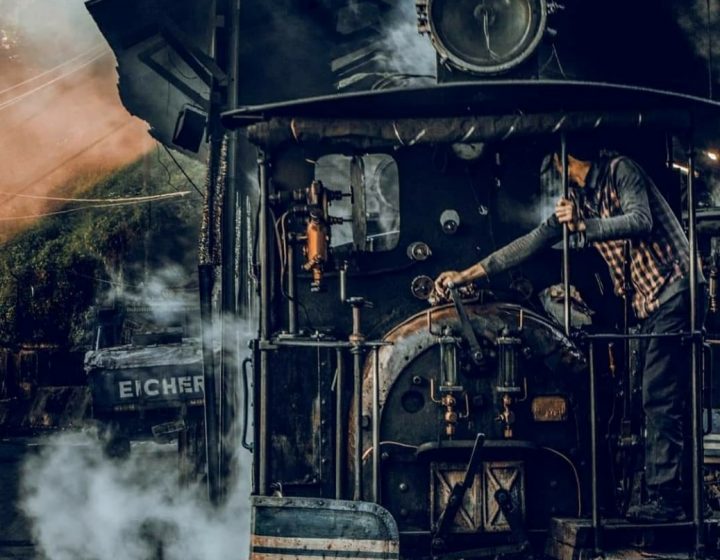Tour overview
3N GANGTOK, 1N LACHEN, 1N LACHUNG, 2N DARJEELING, 2N PELLING
Gangtok “The Gateway to Sikkim”– Incredibly alluring, pleasantly boisterous and wreathed in clouds – Gangtok, the capital of Sikkim, is one of the most popular hill stations in India. Lying at the height of 1650 m above sea level, the town during its bright sunny days offers spectacular views of Mt. Kanchenjunga. Gangtok is a base for adventure enthusiasts comprising of trekkers and campers to the Himalayan mountain ranges. During the months of March to Mid-May, blooming of wild Rhododendrons transform the surrounding regions in vast fields of colourful carpets.
Lachen is a town in North Sikkim district in the Indian state of Sikkim. It is located at an elevation of 2,750 metres. The name Lachen means “big pass”. The town is being promoted as a tourist destination by the Sikkimese government. The town forms the base to the Chopta Valley and Gurudongmar Lake. An annual yak race, the Thangu is held here in summer.Unlike other places in India, Lachen has its unique form of local self governance called the “Dzumsa”. Every household is a member of this traditional administrative system, this institution is in charge of governing and organizing activities within the village.
Lachung about 118kms from Gangtok in North Sikkim, is situated at an altitude of 8,858 ft. Also known as the ‘Small Pass’, Lachung is embraced by snow capped mountain peaks, breathtaking waterfalls, sparkling streams and apple orchards, also peaches and apricots. The market of this city is filled with handicrafts such as exquisitely woven rugs and blankets that make this town ideal for shopping sprees. The residents of Lachung who are mostly Bhutias call themselves Lachungpas.
Pelling– A beautiful town in the West district of Sikkim, has become the second biggest tourist destination in Sikkim after Gangtok. Located 10 km from Geyzing and 130 km from Gangtok, the main attraction of the place is the breathtaking sight of the Khangchendzonga and the neighbouring peaks. The famous Pemayangste monastery is less than a kilometre from here and is a major tourist hotspot. Pelling also has sites for mountain biking, rock climbing, village tours, meditations, apart from serving as a base for a number of treks in the region. The scenic town of Pelling is a perfect holiday destination for all nature lovers and adventure enthusiasts.
Pelling, a beautiful petite town sited at a height of 6800ft was initially covered with wild thick forest which served as home to many indigenous wild animals of that period including Wildman( may not be yeti though). This ridge being situated in between two old Buddhist monasteries (Pemayangtse and Sangacholing) developed into a full-fledged village named Pelling. Today, Pelling is one of the best-chosen tourist hotspots in Sikkim. More than that, Pelling is the heart where all the breathtaking tourist spots of West Sikkim can be visited.
Darjeeling “Queen of The Himalayas”- Jaw-dropping locales, mesmerising sunrises, the untouched beauty of the hills, the old-world charm of the past, and the welcoming smiles of the local people all add up to make Darjeeling one of the most beautiful hill stations in Eastern part of India. Spread over a steep mountain ridge, nestled amidst acres of lush green tea plantations, Darjeeling stands at the height of 2,050 meters above sea level, thus boasting of cool climes all year round. This scenic hill station is the perfect getaway for a romantic honeymoon and is just around 700 kilometres away from Kolkata.
There is a reason the city is known as the ‘Queen of the Himalayas’. The lush green slopes dotted with women plucking tea leaves is a sight as mesmerising as no other. There are over 86 tea estates in Darjeeling that are responsible for producing the worldwide famous ‘Darjeeling Tea’. Have a cup of locally brewed chai at the tea estate, or get down amidst the plantations to pluck a few tea leaves yourself, you are free to take your pick! Darjeeling is a delight for all kind of tourists. The toy train established back in 1881, still runs in this part and is also one of the UNESCO World Heritage sites. Beautiful colonial architecture including mansions and churches dot this little beautiful town. Filled with people from Tibet, Nepal, nearby Indian states and the Gorkhas, Darjeeling is brimming with cultural diversity. The third highest peak in the world and the highest in India, the Kanchenjunga peak is clearly visible from here and you can enjoy a panoramic view of the peak.Darjeeling is a wonderful place to walk around and explore the tea estates, villages, and markets.
Included
- Tour Manager.
- All Toll Taxes, Parking fees and Driver's Expenses.
- All Transportation mentioned in the itinerary.
- Hotel Booking, if required.
Not Included
- Any Private Expenses.
- All other services not mentioned in the inclusions.
DAY 01: TRANSFER FROM (IXB) BAGDOGRA AIRPORT/NJP STATION TO GANGTOK
On arrival at (IXB) Bagdogra Airport/NJP Station, our representative will warmly welcome you on arrival and assist you to the vehicle for the further journey to Gangtok. Thereafter you will depart towards your dream destinations. Throughout your journey, you can enjoy the versatility of climate. Pleasant weather will win your heart completely. On the way, you will pass through beautiful natural heritage and more of all this journey offers magnificent views of the mountains, valleys and village life, the forest, waterfalls, and hills covered with tea gardens.
On arrival Check-in to hotel then after checking in to your hotel and after freshening up. Evening free to roam around M G Road (Mall) or local Shopping center.
Overnight stay at the hotel.
DAY 02: FULL DAY EXCURSION OF TSOMGO LAKE, BABA MANDIR
The next day, You need to get up early, get fresh, and have a heavy breakfast till 7.30 am. You will be picked up from the Hotel in Gangtok & then proceed for a full day excursion of Tsomgo Lake. Tsomgo Lake, also known as Changu Lake is a glacial lake in Sikkim. The name Tsomgo means 'Source of water'. It's located 40kms from Gangtok town and leads to Nathula Pass. This is one of the few high-altitude lakes in India. Before 1962, this was part of the old trade route between India and China. It takes about 2 hours by car from Gangtok to reach the lake along the Kyongnosla Alpine Sanctuary, the home to the red panda and the blood pheasant with Rhododendron and other alpine trees along the road - Situated at an elevation of 3753 meters / 12310 feet - The Lake is oval shaped lake nearly 50 feet deep - Generally covered in snow for most of the year – This lake is home to the Brahminy ducks & many migratory birds – Enjoy playing in snow and Yak Ride. Proceed further to Legendary Baba Harbhajan Singh Mandir (“Hero of Nathula '' An Indian soldier who was awarded the Maha Vir Chakra medal for his bravery and known for doing his duty still after death). Nearby is the sacred Baba Mandir known to be a very holy site for all. You can take a ride on colorfully adorned yaks and ponies. There is also a 957-meter long ropeway (cable car) that carries passengers from the lake to a hilltop nearby. You should reach Tsomgo Lake before noon because in the afternoon the weather here usually starts getting bad. Additionally, Nathula Pass (14,140 ft.) which is the Indo Chinese border can be combined in this trip on request by the passengers at an extra cost.
** Kindly note the following points regarding visit to Nathula**
1. Nathula permits are limited; hence it is NOT a guaranteed trip.
2. If permits are issued, the additional cost to be paid by the passengers is approx. Rs. 3000 - Rs. 4000 per vehicle.
3. Nathula visit cost has not been included in this package.
4. If you have breathing problems, you are advised to consult a doctor before visiting these places (particularly Nathula) because of low oxygen at such high altitudes. Portable oxygen cylinders are available at Medical shops in Gangtok.
In the evening, return from Tsomgo Lake to Gangtok.
Overnight stay at Gangtok.
DAY 03: TRANSFER FROM GANGTOK TO LACHEN AND ON THE WAY SIGHTSEEING
After an early breakfast, we will proceed to Lachen. The route meanders through small villages with valleys up to the forest grove of KabiLangchuk. Shinghik comes next with its promises of one of the most glorious views of Kanchenjunga. Situated at an altitude of over 4000ft, Singhik offers a desired break to the travelers on the way to Lachen. Visit Chungthang- the confluence of Lachen Chu and Lachun Chu (river) and Bhim Nala falls waterfalls on your way to Lachen.
Overnight stay at Lachen.
DAY 04: EXCURSION TO GURUDONGMAR LAKE & THEN TRANSFER FROM LACHEN TO LACHUNG
Early morning drive to Thangu Village (4100m / 13450ft), a remote high altitude village of Tibetan Nomads, and also proceed further to Chopta Valley (4000m / 13124ft) to get some breathtaking views of alpine valleys of frozen rivers. From Chopta Valley, drive for another 30kms in 1.5hr to Gurudongmar Lake (5225m / 17143ft) close to Tibet Border, one of the highest and biggest freshwater lakes in Sikkim and back to Lachen for a late lunch. Check out from Lachen and drive further to Lachung via Chungthang. En-route visit Chungthang confluence of Lachen Chu and Lachun Chu and Bhim Nala WaterFalls. Lachung is another remote high altitude village of Tibetan and Bhutia people in North Sikkim with towering rocky snow peaks, vibrant rhododendron valley, lush green yak pastures, perennial waterfalls, hot springs and the base for exploring the alpine valley of Yumthang and Yumesamdong close to the Tibetan plateau.
Overnight stay at Lachung.
Day 05: EXCURSION TO YUMTHANG & THEN TRANSFER BACK TO GANGTOK
Early morning drive to Yumthang Valley, an alpine flower valley in North Sikkim. Enjoy the scenic landscape and hot springs. The valley is covered with snow from January to March & with rhododendrons during April & May. Enroute visit Sulphur Hot Spring having medicinal values.
Please note: A drive further for 30kms to Yumesamdong (4725m / 15503ft) or Zero Point close to Tibet Border, one of the highest motorable roads in Sikkim is NOT included in this package and has additional charges which need to be paid on prior notice.
Lunch at a hotel in Lachung.After lunch visit Handicraft Centre & Lachung Monastery. Later drive back to Gangtok. In the evening arrive at Gangtok and check into the hotel.
Overnight at a Hotel in Gangtok.
DAY 06: TRANSFER TO PELLING FROM GANGTOK VIA NAMCHI AND RAVANGLA
After an early morning breakfast, we continue our tour to the next best and most beautiful destination Namchi.
Namchi
Namchi, a beautiful destination and a must-visit place in South Sikkim is often known as the Culture Capital of the state. The place has been developed as a hub of religious and cultural tourism in Sikkim. You can see a replica of all the four dhams of India (char dhams) at Namchi and also the biggest statue of Guru Padmasambhava. Namchi also has a well laid out township with a Central Park (a small square) at the town center.
Places Include:
Shirdi Sai Baba Mandir:
Shirdi Sai Baba Mandir & Pilgrimage Centre is located at Asangthang, Namchi. This is the first Shai Baba temple in the whole of Sikkim. It was built by Shirdi Sai Baba Trust of South Sikkim under the patronage of the Government of Sikkim Tourism. It was opened for prayers on 3rd November 2010 by the Chief Minister of Sikkim Dr. Pawan Chamling. The temple is located at the corner of two roads. Although overall it's a striking complex with a garden setting with an awesome architecture with intricate work all around. Upstairs there is a wonderful statue of Shirdi Shai Baba kept on an elevated platform at the end of a huge hall. The hall with its blue decor & hue, and paintings & sculptures of many gods & goddesses around the walls is awe-inspiring. Downstairs is the large prayer room where devotees offer prayers. There is also an elevated stage at the end where kirtan and other religious functions take place that are organized by the trust.
Char Dham: Char Dham is undoubtedly the most popular and the best tourist attraction in Namchi. It is located on a hilltop and about 5kms from the center of town. This large complex has been conceived to take Sikkim to new heights of pilgrimage & religious tourism. The complex comprises the main temple of Shiva on which the imposing statue of Shiva has been set up. Additionally, there are replicas of twelve jyotirlingas to offer one platform to all devotees of Shiva, as well as replicas of the four dhams (Badrinath, Jagannath, Dwarka dedicated to Lord Vishnu and Rameshwar dedicated to Lord Shiva).
Samdruptse: Samdruptse Monastery is about 7kms from Namchi town and up on Samdruptse hill. Before Char Dham, this used to be the main attraction of Namchi, it is still very popular among tourists. Samdruptse means 'Wish-fulfilling Hill'. The locals believe that the hill is actually a dormant volcano. The Buddhists have been regularly offering prayers so that the volcano does not erupt. It has stayed calm so far. There is a mammoth 45-meter statue of Sikkim's patron saint Guru Padmasambhava set up on an elevated platform. The face is coated with gold that glitter in the sun. Walk around the platform and you can get magnificent views of the mountains and forests. The entry to the monastery is from the backside. The foundation stone here was laid by the Dalai Lama on 22nd October 1997. Subsequently, when the work started, it took over 3 years with many renowned architects, engineers, and over 1,000 laborers who worked hard together to set up the statue and the monastery.
Ravangla: Another lovely place is Buddha Park in Ravangla (aka Ravangla) also known as Tathagata Tsal, 30kms from Namchi town. Spread over 23 acres of area, this parkland has a towering sitting statue of Buddha which is 137ft 22inch tall. The face of the statue is coated with 3.5kgs of gold. It is the tallest metal statue of Buddha in the world.
DAY 07 PELLING FULL DAY EXCURSION
Darap Village: A humble abode treasured amidst the lofty mountains, Darap Subba Village is a must-visit for those who want to spend some quality time with nature. Darap Subba Village is also a base for several short treks around Pelling and too few plantations of millet, cardamom, and corn. The tourists mainly visit Darap Subba to seek spirituality and peace, and to relish panoramic views of the snow-capped mountains and terrace fields which offer breathtaking sights. Here, you can sightsee the paddy fields and visit plantation sites. You can also visit the Lepcha house and the Limbu Temple.
Rimbi waterfalls: On the way to Khecheopalri and Yuksam, near Darap Village Rimbi Waterfall is found. The waterfall leads to the Rimbi River and is famous for recreational activities like fishing. Spend some memorable moments with your loved ones here. A decent footfall of tourists is seen here during the summer months.
Khecheopalri Lake: As the prayer flags flutter in the wind and the calming sounds of bells ring one after the other, you know you have your bliss at the Khecheopalri Lake, which is a sacred pilgrimage site, considered holy by both Buddhist and Hindu. This religious place is believed to fulfill one’s wishes. The legend has it, if someone prays and sprinkles the water on oneself, his wishes are likely to come true. It is also said that no leaves can be seen afloat the lake despite being located amidst dense forest as the birds remove the fallen leaves from the water. Similarly, many legends revolve around the lake. A beautiful place, Khecheopalri Lake is a paradise for nature lovers and trekkers. There are short forest routes to get here, en route you can sightsee rare flora and fauna. While here, you can enjoy the peaceful sounds of nature and simply relax.
Khangchendzonga Waterfalls: Khangchendzonga Waterfall is a tourist hotspot offering an awe-inspiring view of its gushing chilled water enthusiastically splattering through the rich green vegetation; amidst the jagged surface of the hill. This waterfall is fed by the streams formed by the melting glaciers of Mt. Khangchendzonga and one has to climb up a little to reach the base of the fall, and feel the striking water shaping the granite rocks underneath. A ropeway is built for the adventure enthusiasts, to feel the thrill of crossing the stream hanging from a harness. Khangchendzonga Waterfall is approx 25 km away from Pelling.
Pemayangtse Monastery: Occupying a small section of beauty at the higher end of western Sikkim, a renowned monastery of Pemayangtse is located. The word Pemayangtse means ‘Perfect Sublime Lotus’ and it is a famous tourist attraction and widely visited by many travelers all year round. With a mere distance of 2 kilometers from Pelling, this attraction is an easy walk. You can unravel Sikkim’s prime beauty by visiting during the spring-summer season when the sky clears. This is so, as you can not only enjoy the holistic site but also witness the enthralling beauty of the Himalayas as well. This place radiates with spirituality, you can simply delve into the calmness of the place and admire the Pemayangtse Monastery.
Rabdentse Ruins: Rabdentse Ruins is the archeological site that tells Sikkim’s story of glory. The place is a must-see for the history-enthusiasts who want to dig into the state’s past in between the spectacular view of Kanchenjunga peak and the gushing river flowing through the foothills. The ruins of Rabdentse Palace are just a walk away from the Pemayangtse Monastery through the dense forest on the way to Pelling. As one enters the gate, the chestnut trees welcome the visitors by dropping mosses on them and lead to the stone throne composed of three standing stones known as ‘Namphogang’ where the judges used to pronounce the final judgment.
Chenrezig statue & Skywalk: A new Buddhist pilgrimage site at Pelling in West Sikkim is all set to attract tourists since November 1, 2018, as it plays host to the world’s tallest 137-feet Chenrezig statue. A destination park with the 41.758 m tall statue of Chenrezig and a new complex with a skywalk, café and a gallery has been built at Sanga Choeling in Pelling at a cost of Rs 46.65 crore. The project was started in 2009, funded and constructed under the supervision of the Department of Culture and the Department of Buildings and Housing.
DAY 08: TRANSFER FROM PELLING TO DARJEELING
After having a hearty meal we continue our journey to the QUEEN OF HILLS ‘DARJEELING’ board your vehicle to Darjeeling. (7380 Ft / 2250 Mts, 100 km / 3 Hrs). After reaching and checking in to your hotel and freshening up, come up to Chowrasta Mall, sit on a peripheral bench for a while, relax & enjoy the ambiance and watch the activities. Then take a stroll along the scenic Mall Road (Bhanu Sarani) and complete a circle. If you reach in the morning half or early afternoon, you will have time to walk up the Observatory Hill behind the Mall and go to the famous Mahakal Temple on top and enjoy the views & sunset.
Overnight Stay at Darjeeling.
DAY 09: DARJEELING FULL DAY SIGHTSEEING
Early Morning (at 04:00 am) drive to Tiger hill (8,400 ft.) to watch the spectacular sunrise over Mt. Khangchendzongha (28,208 ft. Worlds 3rd highest peak), After breakfast relax for a while and then continue your tour visit to Ghoom Monastery and Batasia Loop.
Places Include:
Tiger Hill: Who doesn't know about the magnificent view of sunrise from Tiger Hill. You will need to wake up by 3:30 am and take a vehicle. But the rewards are awesome. You can see the changing colors of the colossal Kanchenjunga snow peaks as the light strikes, it's a place where you can soak yourself with Himalayan beauty. On a clear day, you can also get a glimpse of Mount Everest, Mount Makalu, and one of the most beautiful peaks of the world, Tibet's ChomolHari. Tiger Hill is 11kms away and at an altitude of more than 8,400ft. It takes about 40 minutes to reach the top where there is a view tower for watching the sunrise. There is an entry fee.
Ghoom Monastery: You will visit one of the oldest Buddhist monasteries of Darjeeling located at a scenic location in the Ghoom area. It houses a12-foot tall statue of Maitreya Buddha which represents the Buddha of the future. This is one of the biggest and oldest statues of Buddha in the Darjeeling area. This statue was created with clay that was all brought from Tibet. In front of the Buddha's statue, there are two huge oil lamps that keep burning all the time and all through the year.No entry fee but donation required for taking photos inside.
Batasia Loop and the War Memorial: Batasia Loop is an engineering marvel located in the Ghoom area. This is where the toy train makes a double spiral loop to negotiate a drop of 1000 ft as it moves towards Darjeeling town. Amidst the beautiful garden where the railway track is laid in the form of a loop, there is also a War Memorial. You can walk along the track and complete the loop yourself. I do it every time I am there. Or take the many pathways in the garden and walk around, enjoying the many flowers and the surroundings. It was constructed in honor of the Gurkha soldiers who sacrificed their lives in service of the nation. There is a nominal entry fee. Don't miss the Samosas (fried vegetable pastries) that are sold near the entrance of Batasia Loop in the morning.
Japanese Temple & Peace Pagoda: Close to the Darjeeling town and in a scenic setting there is a temple built in a traditional Japanese style. About 100 yards away and in the same complex, there is a large Peace Pagoda that showcases four avatars of Buddha. The view of the mountain range and Darjeeling town from the top of the pagoda is spectacular. No entry fee. Caution: In order to save time, some drivers try to treat these two attractions as separate ones and count 2 instead of one. Don't be deceived or you will miss out on one of the following.
Himalayan Mountaineering Institute - Darjeeling Zoo - Natural History Museum: These are three attractions co-located in the same large compound. The Himalayan Mountaineering Institute was built to honor Tenzing Norgay's triumph to Everest and is dedicated to providing mountaineering and rock climbing lessons to students from all over the world. There is a mountaineering museum as well. The highlights of this museum include the artifacts from various Himalayan expeditions, the Everest section showcasing Tenzing's personal belongings, an eagle found dead at 26,000 feet during the 1960 Everest expedition, a high power telescope that once belonged to Hitler and was used by the Institute, etc. Darjeeling Zoo has many high altitude Himalayan animals including Snow Leopard, Tibetan Wolf, Himalayan Black Bear, Red Panda, yaks, etc.
Darjeeling Ropeway: You will board the cable car from Singamari located 3km away from the town center. The 45 minutes ride takes you from an altitude of 7,000ft to 800ft with a wonderful vista of a valley around Rangeetriver, tea estates, and sweeping views of the snow peaks of the Himalayan range including Kanchenjunga. The ticket needs to be purchased. During the high season, there may be long queues. So try to book in advance.
Tea Garden: An old tea estate that exports all its produce to Harrods in London and a few other countries. You can see the delicate tea processing in the factory with the help of a guide and buy tea packets from its outlet. You won't get this tea anywhere else in the country. There is no entry fee.
Tibetan Refugee Self Help Center: A center and a factory established by the Tibetan refugees who fled Tibet and took refuge in Darjeeling. They not only live here, but also produce varieties of exquisite handicraft items to make their living. The handcrafted items include jackets, carpets, gloves, aprons, bags, curios, cards, pouches, carved wooden items, Tibetan paintings etc. This is a great place to buy a gift or a souvenir for your friends and relatives. There is no entry fee.
Overnight stay at Darjeeling.
DAY 10: TRANSFER FROM DARJEELING TO BAGDOGRA AIRPORT/NJP STATION
After early morning breakfast, depart for (IXB) Bagdogra Airport/NJP Station for the onward connection .

